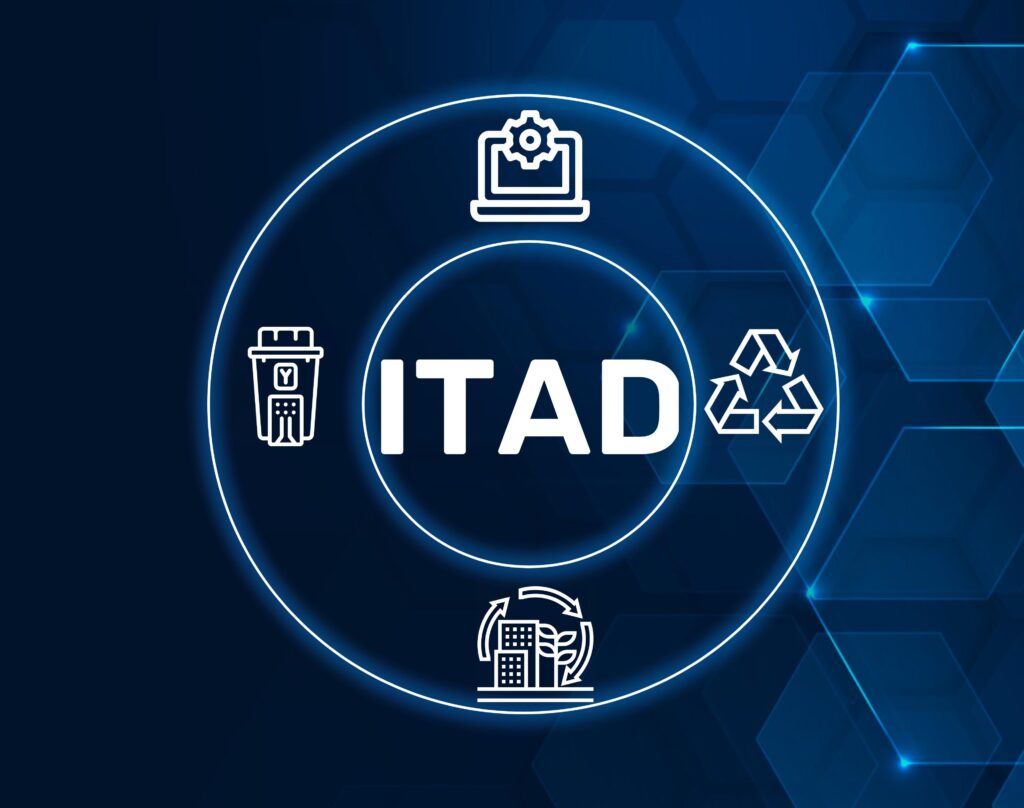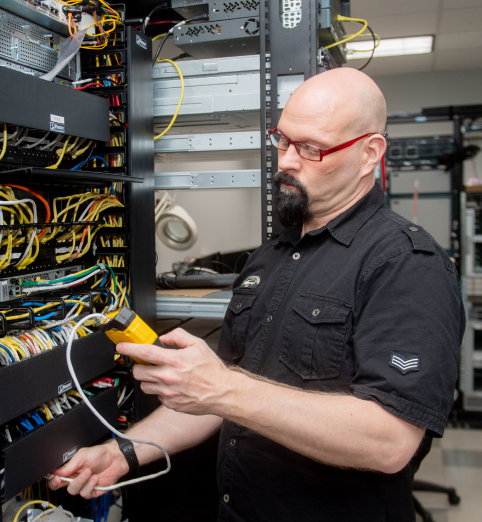Hidden Cost of Google Cloud Migration and How to Offset Them
Migrating to Google Cloud is a strategic move that delivers scalability, agility, and modern technologies. But many organizations discover additional costs once the migration begins.
According to data, organizations ended up spending about 15% more on public cloud services than they had originally budgeted.. Managing these costs ranked as the top challenge for IT leaders. The issue isn’t just infrastructure or licensing, but the overlooked expenses that add up.
This article explains the hidden costs of Google Cloud migration and how IT asset disposition (ITAD) can help recover value, reduce waste, and help you manage your budget.
5 Hidden Costs of a Google Cloud Migration

In a 2024 Gartner survey of 200 IT leaders, 69% said their organizations went over budget during cloud migration. The 31% who stayed on track pointed to clear forecasting, active cost monitoring, and consistent optimization.
You can stay ahead by identifying and addressing these costs early in your migration plan.
Licensing and Migration Tools
When you migrate to Google Cloud, you need tools to move servers, apps, and databases. Some are from Google. Others are from third-party vendors.
Here’s what to keep in mind:
- Google Migrate for Compute Engine moves virtual machines into Google Cloud. The tool itself is free, but you pay for the test and cutover VMs you run during migration.
- Google Database Migration Service helps move databases like MySQL, PostgreSQL, and SQL Server. If the source and target engines are different, it costs about $0.40 per gigabyte for backfills and $0.93 to $2.32 per gigabyte for change data capture.
- CloudEndure (AWS) migrates servers with an installed agent. It charges about $0.028 per server hour, which totals around $20 per server each month while active.
Each tool adds to your migration costs differently. Some charge based on data volume. Others bill for server usage over time. Many also require separate licenses or paid support.
Training and Hiring Gaps
Running Google Cloud requires skills most on-premises teams don’t have. Your team must learn core services like Compute Engine, Cloud Storage, IAM, and tools such as Cloud SDK or Terraform.
Without these skills, even basic tasks like setting up a VM or managing permissions can delay your project. To close the gap, you can train existing staff or hire certified professionals.
Training takes time through platforms like Google Cloud Skills Boost or vendor-led courses. Hiring cloud roles like site reliability engineers or cloud architects costs about $128,000 to $130,000 per year.
Mis-Provisioning of Cloud Resources
When you move to Google Cloud, you choose machine types based on how much CPU and memory your workloads need. For general workloads like web servers or small apps, e2-standard-2 offers 2 vCPUs and 8 GB RAM. It costs about $0.07 per hour, or around $49 per month per VM.
For heavier compute workloads, like high-traffic backend services or large batch jobs, n2-standard-2 provides the same core specs but with better performance. It costs about $0.12 per hour.
Each VM type runs a specific kind of workload and drives a fixed hourly cost. Once deployed, that cost repeats across every instance until you change the configuration.
Support and Troubleshooting Costs
During migration, your team works with new tools and services that can trigger unexpected issues. To resolve them quickly, you need a paid Google Cloud support plan.
Here’s what each Google support tier costs:
- Standard Support starts at $29 per month or 3% of your monthly cloud bill, whichever is higher. It covers technical case filing, billing help, and a 4-hour response time for high-priority issues.
- Enhanced Support starts at $100 per month, plus usage-based fees: 10% of the first $10K, 7% of the next $70K, 5% of the next $170K, and 3% above that. It includes technical support, guidance on implementation, and a 1-hour response time for urgent issues.
- Premium Support starts at $15,000 per month, plus a sliding usage-based fee. It offers a 15-minute response time for critical cases, technical account management, and architecture reviews for complex environments.
On-Prem Hardware Still Drawing Costs
When you leave servers and network gear plugged in after migration, they keep using power, space, and staff hours. A recent Nlyte report shows a standard rack drawing 7 to 10 kilowatts costs about $860 per month in power and cooling at average U.S. rates.
Each rack also brings ongoing space costs. In a colocation facility, this shows up as a monthly charge based on rack footprint and power draw. In an on-prem setup, the same racks take up rooms that still need lighting, security, and facility management. That cost continues every month until you shut down and remove the equipment.
7 Ways to Offset Hidden Costs of Google Cloud Migration
Only 30 % of organizations clearly track where their cloud budget goes, while the rest risk losing control over unexpected expenses.
Here’s how you can regain control and offset those hidden costs:
Plan Licensing and Tools Early
Licensing costs rise quickly if you don’t plan tools in advance as part of your IT upgrade planning. Each migration tool follows a different pricing model. Some charge by gigabyte, others by server hour or flat monthly rate. These charges apply during testing, staging, and cutover, and continue until you decommission the tools.
Start by listing every tool your team will use during migration. Include Google-native options such as Database Migration Service, Migrate for Compute Engine, and Transfer Appliance. If your workloads require additional support, add third-party tools like CloudEndure.
Once the list is complete, review the pricing for each tool and note whether it charges per gigabyte, per server hour, or per month. Then estimate how long each tool will stay active during the migration. Assign someone on your team to track license usage from start to finish. When each tool finishes its job, shut it down or cancel the license to stop ongoing charges.
For instance, if CloudEndure runs at $0.028 per server hour, one server running for 30 days costs $20. If you run 50 servers for a month, that adds up to $1,000 until you turn them off.
Upskill Before You Migrate
If your team enters a cloud migration without hands-on experience, tasks slow down and mistakes increase. Delays in setting up resources, managing access, or deploying services can stall the project, undermining cost cutting strategies.
You can stay on track by upskilling your team before the migration begins. Start by mapping each team member’s current skills and tools they already use. Then identify the gaps by comparing their experience against the core services used in Google Cloud, such as Compute Engine, Cloud Storage, IAM, billing, and monitoring.
Once the gaps are clear, choose a training path that fits your timeline and workload. Use Google Cloud Skills Boost for hands-on labs or follow certification tracks like Associate Cloud Engineer for structured learning.
If your migration schedule is short, bring in certified cloud engineers to support your team during critical phases and help close skills gaps in real time.
Set Realistic Cutover Timelines
If you delay cutover or run both systems at once, costs rise across infrastructure, tools, and staff time. Workloads may stay active in both environments, and duplicate services continue billing.
To stay ahead, you need a clear structure in place to manage cutover timelines step by step:
- List all systems involved in the migration, including apps, VMs, storage, and network dependencies
- Assign cutover windows to each group based on when they finish testing and validation
- Align dates across teams to avoid gaps between when systems go live and when old ones shut down
- Track active systems daily to identify which services still run on legacy infrastructure, especially if you’re transitioning to optimized infrastructure for AI data centers.
Right-Size Your Cloud Resources
Oversized instances raise your cloud bill. Undersized ones slow down workloads and cause performance issues during daily operations. These sizing mistakes often go unnoticed until costs spike or systems lag.
You can avoid both by reviewing usage data early and making targeted changes based on what your systems actually need. Use these steps to right-size your resources as part of effective IT asset management:
- Review usage reports: Open Google Cloud Monitoring and pull reports on CPU, memory, and storage usage over the last 7 to 30 days to understand current demand.
- Compare instance sizes: Look at how much of each VM’s allocated resources are actually in use. Flag VMs with consistently low or high utilization for resizing.
- Apply recommendations: Use Google’s Recommender or Compute Engine rightsizing insights to adjust VM types based on real usage patterns and pricing models.
- Set a review schedule: Schedule a monthly check to revisit usage reports and adjust VM sizes as workloads shift during or after migration.
For example, if an n2-standard-8 VM (8 vCPU, 32 GB RAM) costs around $250 per month, but usage reports show the workload only uses 2 vCPU and 8 GB RAM, switching to an e2-standard-2 could cut that cost to $49 per month. Multiply that across 10 instances, and you reduce spend by over $2,000 per month.
De-Risk Lift-and-Shift Projects
Moving all apps at once can delay timelines, increase costs, and trigger unexpected production issues. Apps with hardware dependencies, legacy software, or static IPs often fail to run as expected in the cloud.
Start with a full audit to avoid this. List every app in scope and map its connections, hardware requirements, and runtime conditions. Identify which workloads can move as-is and which need updates to run properly on Google Cloud.
Once the audit is complete, sort your apps into migration phases. Start with low-risk, self-contained workloads to test your process. Then apply those lessons to more complex systems.
This approach gives your team control, helps avoid issues caused by a weak disaster recovery plan, and reduces failure points at each step.
Build a Support Playbook
When you go live without a support plan, small issues can slow everything down. A VM runs out of space, but no one knows who owns it. A user loses access, but the request goes nowhere. Tickets stall because teams are unclear on routing and escalation.
To solve this, build your support playbook before migration ends. Start by listing every tool, platform, and system in use. Assign one person to own each item on the list. That person tracks issues, handles fixes, and keeps documentation up to date.
Once ownership is clear, define your day-one workflows. Walk through how the team will handle tasks like access requests, performance checks, billing questions, and tool outages. Write out each step and name who takes action at each point.
Map out your escalation paths using real scenarios your team will face. For example, route application failures to engineering, security concerns to IT, and licensing issues to procurement teams familiar with HPC hardware procurement strategies. Make sure each path is clear so tickets reach the right team without delay and nothing gets stuck in the queue.
Recover Value Through ITAD

When you move to Google Cloud and leave old equipment sitting in racks, it keeps draining power, taking up space, and exposing you to data security risks. Unused servers hold sensitive data, show up on audits, and cost money every month.
To recover value, hand off your decommissioning to a certified ITAD provider. Start with a full audit to log every asset still in your data center. Then schedule onsite pickup, where equipment is securely removed, wiped using industry standards like NIST 800-88, and prepared for resale or recycling.
Inteleca offers certified ITAD services that track each device by serial number and provide certificates for data destruction and resale recovery. These records support your audit trail and help demonstrate ROI on your migration.
How Inteleca Helps You Offset Google Cloud Migration Costs
Cloud migration moves your workloads forward, but it also leaves behind powered hardware, unmanaged data, and recurring costs that drain your budget.
Inteleca is a certified ITAD provider that helps you recover value from retired hardware safely and efficiently.
Here’s how our process works:
- On-Site Audit and Valuation: We audit your remaining equipment, assess condition, and estimate resale value with full chain-of-custody tracking.
- Decommissioning: Our in-house ITAD team disconnects, packs, and removes servers, storage, and network gear, reducing the load on your IT team.
- Certified Data Destruction: We wipe or destroy all drives to NIST 800-88 or DoD standards and provide certificates for compliance.
- Resale or Recycling: We resell qualifying hardware and responsibly recycle the rest, returning residual value to you.
- Full Reporting: You receive detailed, audit-ready reports, including asset tracking and proof of data sanitization.
Plan your ITAD timeline alongside your cloud cutover. Schedule a consultation with our team to see how value recovery fits into cloud migration.



